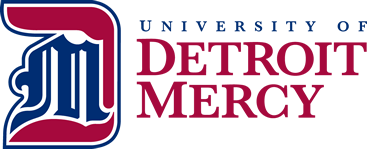Teaching Fr. Coughlin's Social Justice
Unit 1: Using Primary Documents
In retrospect, looking back upon the Great Depression years, through the experience of the Holocaust, the civil rights movement, and the present-day nostalgia for World War II and "simpler times," Fr. Coughlin seems a very strange figure to us in the twenty-first century. He is held up as a figure of abject shame, a lone voice shouting in the darkness, a radical bigot apart from and unlike the mainstream of the public mind. For some his relative obscurity to the public consciousness, especially in relation to President Franklin Roosevelt, raises the specter that only troublemakers and historians seek to revive his memory to mock and defame revered religious institutions. We see a man whose star rose meteorically and fell just as quickly; who appealed particularly at the end, to the radical fringe. Why then pay attention to Coughlin? Why not consign him to the famous "dustbin of history"? What purpose could he serve?
Coughlin is deserving of attention not to repair his reputation, but to serve several other interests. First, by banishing him from our historical narrative distorts our understanding of a particular era in U.S. history. It further leaves his memory to sensation and as a bizarre iconic figure to certain elements of society. That which is forbidden tantalizes. Whether we like it our not, we own Coughlin and his legacy and it must be acknowledged. Bringing him into the limelight of historical analysis and public discussion we examine and engage his views and significance without leaving it to the shadows of public memory. Though such a discussion might bring Coughlin a certain level of notoriety, at the same time it is an opportunity to engage troubling religious and social issues that remain with us to the present day.
Within one of the most desperate times in the nation's history, Coughlin, along with Louisiana Senator Huey Long, offered immediate and seemingly concrete answers to what ailed society through the powerful new medium of radio. Many listened to Coughlin's broadcasts and believed that they knew who was to blame for their woes and how they could understand what had happened to their lives. For the present-day, these writings and broadcasts also remind that the Great Depression was more than apple sellers and hoboes. The simple economic and social nostrums offered by both the Hoover and Roosevelt administrations did not alleviate the fears and unease of a public witnessing suffering all around them.
Finally, Coughlin had an audience both in person, print, and through his broadcasts. Despite the difficulty of obtaining precise listener numbers in a pre-Nielson ratings era, it can be safely assumed that millions had heard at least one broadcast or come into contact with Coughlin at some point. He spoke, even if only for a short time, to the anger and frustration that many felt, and why he could have had such an audience is of no small concern to us today living within a media saturated society. The harsh religious attacks made against the nation's Jewish community did not emerge from a vacuum. Much like his economic views, these visions of conspiracy speak to a mindset present even today. Only by engaging, analyzing, and critiquing our collective history can we hope to learn of the past through the people who lived it. This project does not seek to rehabilitate Coughlin, but it does ask that we examine a piece of our history that discomfits and disquiets.
Lesson Plan 1: How to read and examine Social Justice
Description | Learning Objectives and Benchmarks | Outcomes and Requirements | Activities | Independent Practice | Bibliography/List of Resources | Lesson in PDF | Back to Lessons Home
Lesson Plans Developed by
Matthew Lawrence Daley, Ph.D.
Assistant Professor of History
Grand Valley State University



